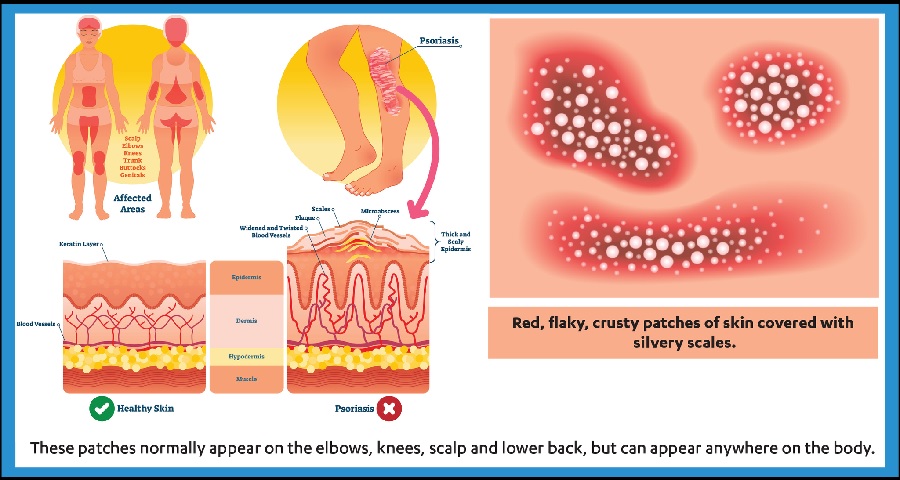Inverse psoriasis is an immune-mediated, painful, and difficult type of psoriasis that affects the skin folds. It is sometimes also referred to as “hidden” or “intertriginous” psoriasis by healthcare providers. It occurs in the body where skin rubs against skin, such as underarms, genitals, buttocks, below the breasts, in the groin, inner thigh area, etc. It is a rash on the skin that looks shiny, smooth, and brown, purple, or red in color.
Inverse psoriasis is an auto-immune disease, but because the antibody responsible for the disease has yet to be identified, it is classified as an immune-mediated disease. This means that the causing factors of the disease are still unknown to the experts, but it is something related to the response of the immune system.
How Inverse Psoriasis is different from psoriasis?
Psoriasis and inverse psoriasis are both skin diseases that cause rashes, but they differ in their area of appearance. Psoriasis typically affects elbows and knees, whereas inverse psoriasis appears in very specific places on your skin, such as the groins, breasts, and other skinfold areas. In psoriasis, you will observe thick, scaly, discolored patches on the skin with a white or silver color. But you will not find any thick, scaly patches in the case of inverse psoriasis. The rash looks shinier and pink in color because of the moisture in the body.
What are the Causes of Inverse Psoriasis?
The actual cause is still unknown, but according to the experts, your genes and the immune system play a major role in causing this disease. It is also considered an auto-immune disease in which the immune system reacts abnormally, causing inflammation of the skin, due to which new skin cells start to multiply too quickly. In normal conditions, it takes 28 to 30 days for the growth of new cells in the skin. But in people suffering from inverse psoriasis, the growth of the new cells becomes faster, and they start moving to the surface of the skin every 2 to 4 days. The shiny rash on the skin is created due to the replacement of old cells with new ones.
What are the Symptoms of Inverse Psoriasis?
Symptoms of inverse psoriasis include:
- Bright, red patches of skin in body folds.
- Cracks in your skin folds.
- Itchiness and irritation.
- Moist patch of skin.
- Small cuts or cracks in the skin.
- Painfulness
Areas that are affected by Inverse Psoriasis
- crease of the neck.
- armpits.
- under the breasts.
- between belly folds.
- between buttocks.
- in groins
- inner thighs
- around penis, scrotum, or vulva.
What are the Risk Factors for Inverse Psoriasis?
Inverse psoriasis is most common in people with deep skin folds due to obesity. Other than this, more factors can contribute to skin irritation in different areas of the body. These include:
- weak immune system
- certain injuries like cuts, scratches, surgery, sunburn, etc.
- severe emotional stress
- excessive sweating
- excessive weight may cause more skin folds in the body.
- certain prescribed medicines, especially the ones that include lithium and antimalarial tablets.
- diabetes
- living in a hot and humid climate
If you observe a persistent skin rash on any part of your body, contact your healthcare provider. Take the prescribed medication to prevent it from further spreading. Visit icare4u for more information.



